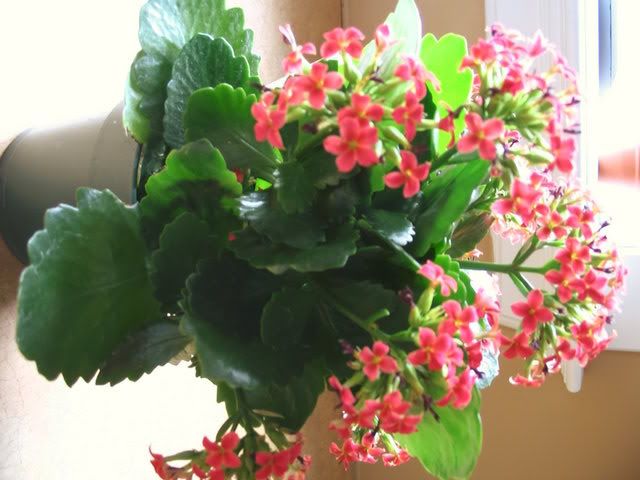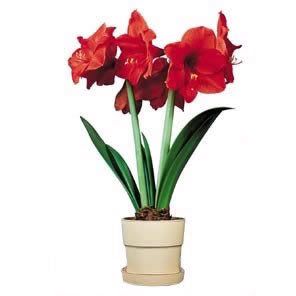It's the ASPCA's National Poison Prevention week, and I'd like to share with you one poison you might not think of being so poisonous to cats: Easter Lilies. The text below is from the ASPCA in black, and my additions are in red.
Lilies
Members of the Lilium spp. are considered to be highly toxic to cats. While the poisonous component has not yet been identified, it is clear that with even ingestions of very small amounts of the plant, severe kidney damage could result.
Many types of oriental lilies are included in flower arrangements, and the Easter Lily shows up in the spring in grocery stores to tempt us with its bright white petals and fragrance. However, this is one flower that should be kept well-away from cats because of the danger to feline kidneys. Any lilies in fresh flower arrangements also can be dangerous to house pets!
Some other indoor flowers that are toxic to cats:
Azalea/Rhododendron
Members of the Rhododenron spp. contain substances known as grayantoxins, which can produce vomiting, drooling, diarrhea, weakness and depression of the central nervous system in animals. Severe azalea poisoning could ultimately lead to coma and death from cardiovascular collapse.
Another popular flowering plant that shows up in grocery stores and florists year 'round, azaleas come in many colors and are very tempting to purchase as a quick gift. Keep azaleas outside as a landscape plant. They are deer-resisitant to deer for a reason!
Cyclamen
Cylamen species contain cyclamine, but the highest concentration of this toxic component is typically located in the root portion of the plant. If consumed, Cylamen can produce significant gastrointestinal irritation, including intense vomiting. Fatalities have also been reported in some cases.
Who can resist this flowering house plant in the grocery store? Well, you should. Not only is it toxic, but because almost all cyclamen plants are prone to mite infestations, the plants are drenched in insecticides by the florist industry - insecticides that are treated to remain on the leaves to keep the mites off - these insecticides can rub off the leaves and make humans and pets ill if ingested, making the plants a no-no in my book.
Kalanchoe
This plant contains components that can produce gastrointestinal irritation, as well as those that are toxic to the heart, and can seriously affect cardiac rhythm and rate.
Okay, this one I did not know about until I read it on the ASPCA website. I grew up with cats and kalanchoes living in harmony, and no cat I ever had tried to chew the fleshy succulent leaves. These plants are very popular in the mass-market florist trade because their long-blooming sturdy flowers can handle transportation and have a very long shelf-life. Found year-round at almost every grocery store's florist nook, they're great houseplants, but keep them where cats cannot reach them.
Amaryllis
Common garden plants popular around the holidays, Amaryllis species contain toxins that can cause vomiting, depression, diarrhea, abdominal pain, hypersalivation, anorexia and tremors.
My favorite blooming houseplant of all-time. The flowers usually aren't attractive to cats to eat, and neither are the floppy, strappy leaves. I have had both amaryllis and cats for years. My advice - just keep the leaves up away from cats, and provide cat grass as a more tempting alternative to nibble upon. If you don't feel like taking care of the bulb after it has bloomed, give it to a gardening friend who can cherish it.
These popular blooms are part of the Compositae family, which contain pyrethrins that may produce gastrointestinal upset, including drooling, vomiting and diarrhea, if eaten. In certain cases depression and loss of coordination may also develop if enough of any part of the plant is consumed.
The common mum. As cut flowers and seasonal potted plants, it is hard to get away from a mum. Pyrethins are used as insecticides, so best to keep mums away from nibblers!
Peace Lily (AKA Mauna Loa Peace Lily)
Spathiphyllum contains calcium oxalate crystals that can cause oral irritation, excessive drooling, vomiting, difficulty in swallowing and intense burning and irritation of the mouth, lips and tongue in pets who ingest. Many years ago, Spooker chewed on some Peace Lily leaves and got blisters on her lips and gums, so I know first-hand that this common houseplant can be harmful. If you have it in your home, be aware that it has the potential to be hazardous.
A video by the ASPCA of toxic plants can be viewed by clicking here.
Keep your pets safe and happy!
~ Not The Mama










3 comments:
Thanx for sharing! We or shall we say, mom, didn't know Lily's were on that list.
Thanks for telling us, we were shcked by some of the plants/flowers on the list. We had no idea Lilies were poisonous.
Great information, I didn't know about most of these plants!
Post a Comment